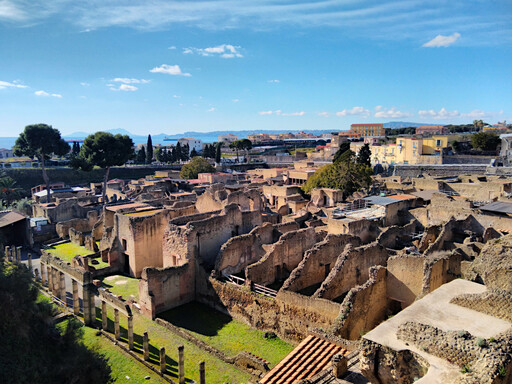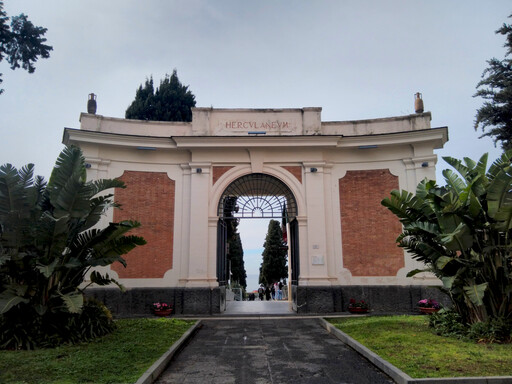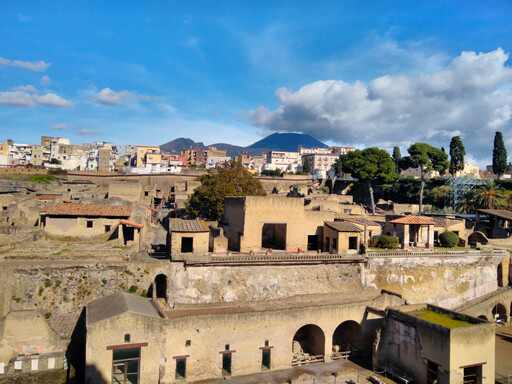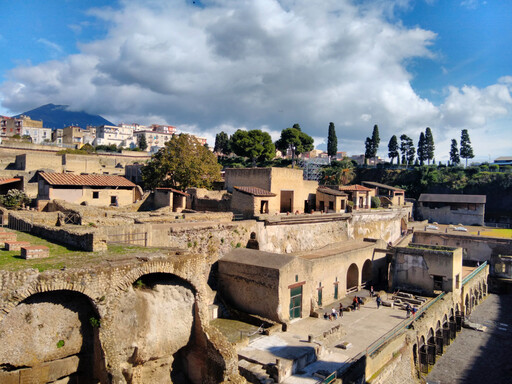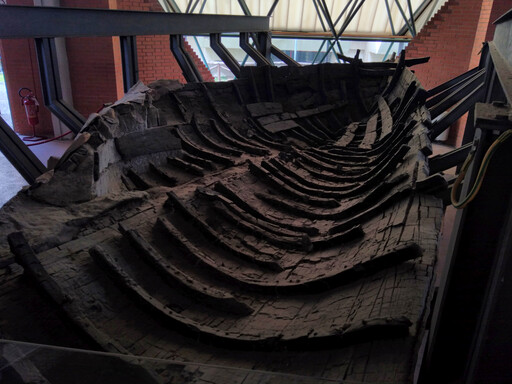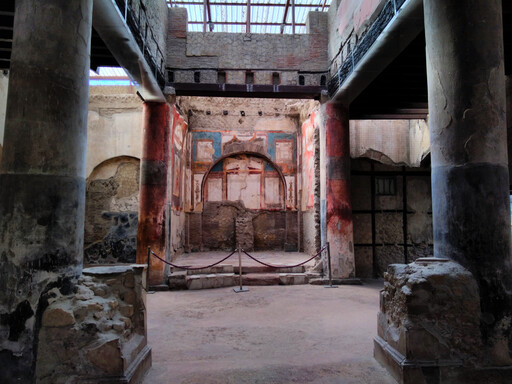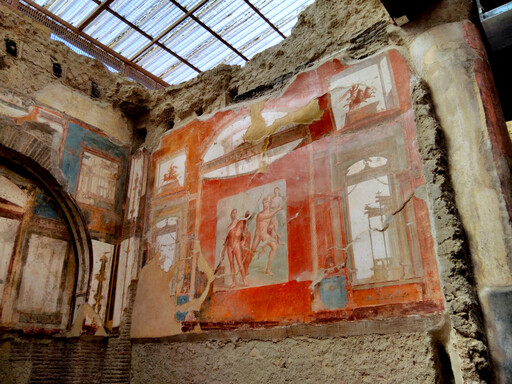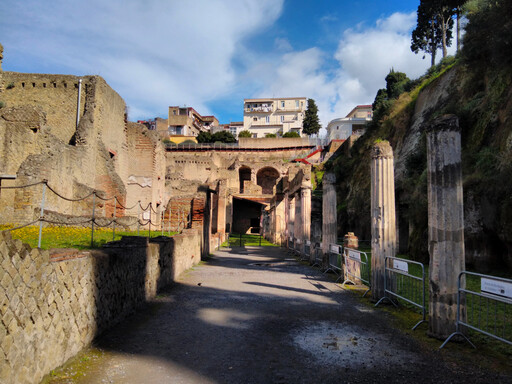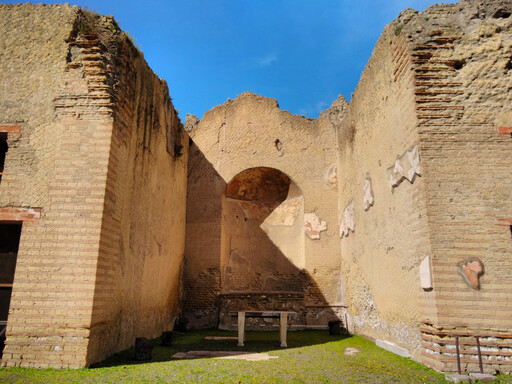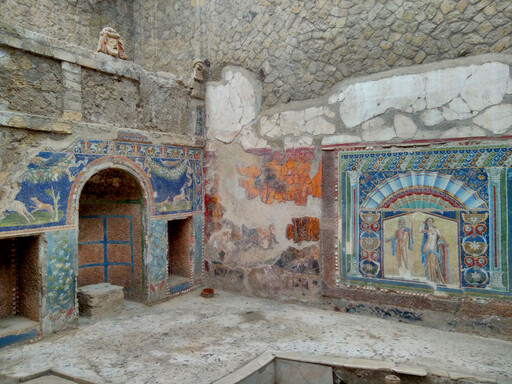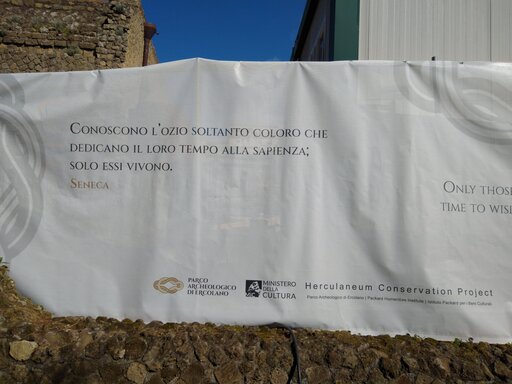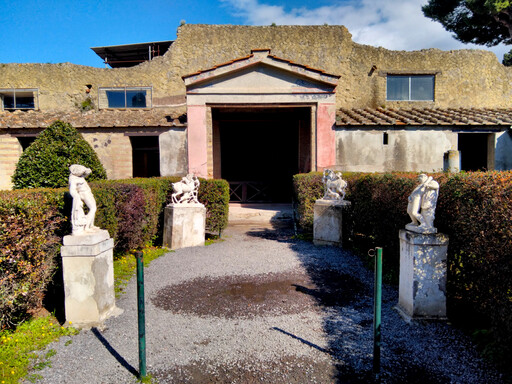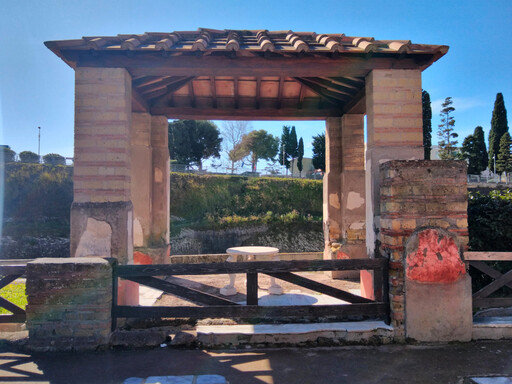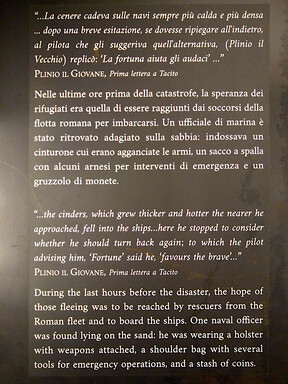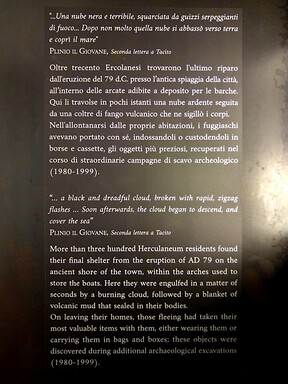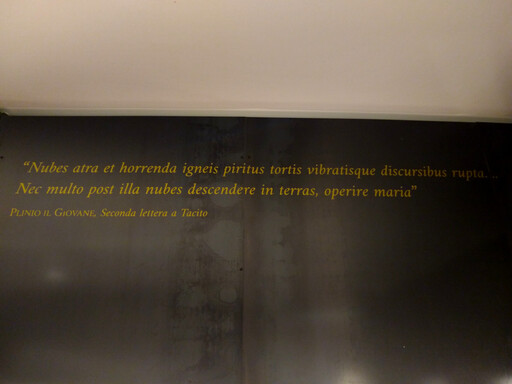Herculaneum
At the foot of mount Vesuvius there existed, until the fated year of 79 AD, a Roman town named Herculaneum. Legend says it was founded by the Greek hero Ἡρακλῆς (Heracles, known to the Romans as Hercules) himself while returning from Iberia after one of his twelve labors, and named after him. While not as large as the nearby city of Pompeii, its position at (what was then) the seaside made it a retreat for Roman nobility including, it is believed, Julius Caesar's father-in-law, Lucius Calpurnius Piso Caesonius, and its four thousand inhabitants enjoyed decent prosperity.
That, of course, changed radically with the eruption. At around 1AM heat waves of up to 400°C reached the town, traveling at 160km/h, killing those who remained instantly and burying the area under 20m of volcanic ash.
More than a millennium and a half would pass until the town was accidentally rediscovered in 1709 during the excavations for the construction of a well. Because of its position away from the wind direction in that particular day of the eruption, its destruction was much reduced compared to other places around the gulf such as Pompeii, making it unique in how well-preserved its structures are, as well as the artifacts found inside them (most of which are now on display in the museo archeologico nazionale di Napoli).
The modern Italian city of Ercolano, renamed after the ancient Roman town it was built (unknowingly) upon, is located 450m away from what is today the coast, and the ancient ruins are now 4m below sea level. Around ¾ still remain buried, as efforts have lately been focused on preserving the rapidly-deteriorating parts which have already been excavated. This is also the reason why some of these pictures are not at ideal and sometimes are even at awkward angles: many of the houses, rooms, and spaces are not accessible so they can be better preserved and renovated.
New discoveries are constantly made. A recent example was the unearthing of more than three hundred human skeletons in 1980 inside what were then the docks, revealing the last moments of those who remained and waited to be rescued by brave sailors, such as (and as is famously recounted by) Pliny the Elder.
Another recent excavation area, currently closed for the public, is Villa dei Papiri, named after the many ancient texts found in its vast library (if you ever need further evidence of the decadence of Western society — not that there is a short supply — think about how nobility in Roman times went to the seaside to read Greek texts about Epicurean philosophy). Getty Villa in Los Angeles is a reconstruction of the Herculaneum villa, illustrating how it and the other houses looked like at its prime just before the eruption.
Soli omnium otiosi sunt qui sapientiae vacant, soli vivunt
Only are at leisure those who dedicate their time to wisdom, only those live
